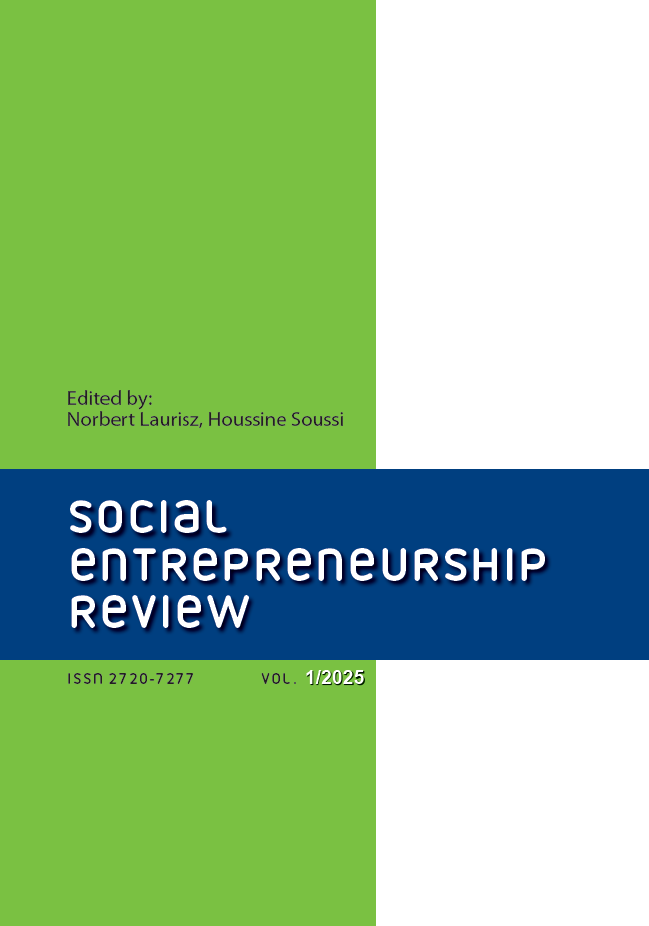Conceptual framework of an assessment of an economic impact of an enterprise
DOI:
https://doi.org/10.15678/ES.2018.2.13Keywords:
economic impact of an enterprise, social benefits, value added, wages, profit, taxesAbstract
In the context of the “middle income trap” discussion and promotion of domestic enterprises, the paper proposes a method aiming at identification and calculation of benefits of national economy that are brought by an enterprise. Research method consists of identification of categories impacting value added created by a firm and of testing such a tool using financial statements of three public companies. Scoring an enterprise bases upon sum of taxes and remuneration of labour and capital, i.e. corporate income tax, salaries and other benefits of employees, as well as capital accumulation together with profit shared among domestic residents. In order to take into account the scale of an enterprise and to measure efficiency of production factors’ use, this sum is then divided by firm’s assets’ value. Conclusions cover the conformation of leaving aside the nationality of firm owners, inquiry into the degree of accuracy in which the method corresponds to the economic reality and potential inclusion of additional criteria of measuring social impact of an enterprise.
Downloads
References
Begg D., Vernasca G., Fischer S., Dornbusch R. (2014). Makroekonomia. Warszawa: Wydawnictwo Naukowe PWN.
Bess R., Ambargis Z. (2011). Input Output Models for Impact Analysis: Suggestions for Practitioners Using RIMS II Multipliers. Referat zaprezentowany podczas The 50th Southern Regional Science Association Conference, Louisiana.
Białowąs T. (2016). „Zmiany strukturalne a wzrost gospodarczy krajów Europy Środkowej”, Rocznik Instytutu Europy Środkowo-Wschodniej, z. 5, s. 121–139.
Blanchard O. (2011). Makroekonomia. Warszawa: Oficyna Wolters Kluwers business.
Głowacki J., Jelonek M. (2013). Badanie społecznej wartości dodanej podmiotów ekonomii społecznej w Polsce za pomocą narzędzia ESometr: raport z badania. Kraków: Małopolska Szkoła Administracji Publicznej Uniwersytetu Ekonomicznego.
Hamilton J.R., Whittlesey N.K., Robison M.H., Ellis J. (1991). „Economic Impacts, Value Added, and Benefits in Regional Project Analysis”, American Journal of Agricultural Economics, Vol. 73, No. 2, s. 334–344.
Kuznets S. (1934). National Income, 1929–1932. 73rd US Congress, 2d session, Senate document no. 124, s. 5–7.
Leontief W. (1941). The structure of the American economy. Cambridge, Massachusetts: Harvard University Press.
Lequiller F., Blades D. (2006). Understanding National Accounts. Paris: OECD.
Lorenc S. (2016). „Metodologie raportowania wartości dodanej dla interesariuszy”, Organizacja i zarządzanie. Kwartalnik naukowy Politechniki Śląskiej, nr 2(34), s. 127–141.
Miller R.E., Blair P.D. (2009). Input-Output Analysis: Foundations and Extensions. 2nd ed. New York: Cambridge University Press.
Nowicki D. (2018). „Ekonomiczna wartość dodana jako narządzie oceny dokonań przedsiębiorstwa”, Studia Ekonomiczne. Zeszyty Naukowe Uniwersytetu Ekonomicznego w Katowicach, nr 347, s. 134–144.
Wawiernia A. (2013). „Warunki tworzenia wartości dodanej w przedsiębiorstwie”, Zeszyty Naukowe Uniwersytetu Szczecińskiego. Finanse, Rynki Finansowe, Ubezpieczenia, nr 64, T. 1, Zarządzanie wartością przedsiębiorstwa, s. 287–294.
WBCSD (2013). Measuring socio-economic impact, A guide for business. World Business Council for Sustainable Development, www.wbcsd.org (dostęp: 29.12.2015).
Weisbrod B, Weisbrod G. (1997). Measuring Economic Impacts of Projects and Programs. Economic Development Research Group.






